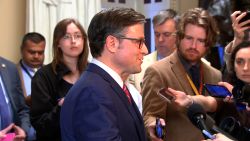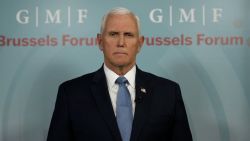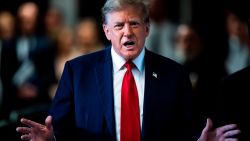Earlier this week, the Congressional Budget Office announced that the federal deficit for this past fiscal year was $984 billion, the highest that it’s been in seven years.
In years past, that announcement would have been met with outrage by Republicans – and even some Democrats. We are mortgaging our children’s future! We are on an unsustainable path! We need to start tightening our belts!
Today? Barely a peep.
That change is indicative of how radically President Donald Trump has reshaped the Republican Party in his own image since he seized it in a hostile takeover in 2016. Trump has never evinced any real interest in shrinking the deficit – and the underlying national debt it feeds – beyond some platitudes offered to fiscal conservatives during the campaign.
“We’re not a rich country. We’re a debtor nation … We’ve got to get rid of the $19 trillion in debt,” Trump told The Washington Post. “I think I could do it fairly quickly. … I would say over a period of eight years.”
But Trump has put a series of policies in place – most notably the tax cut law – that have ballooned the debt to more than $22 trillion in just the last three years alone. And he has done so with no real focus on (or care for) what the ballooning debt means for our overall financial health. And without once fiscally hawkish Republicans in Congress saying much of anything.
Why does this matter? For lots of people, it doesn’t.
A Pew Research Center poll earlier this year showed that less than half (48%) of the public said that reducing the budget deficit should be a top priority for Congress and the President. That’s a marked decline from early 2013 – the start of former President Barack Obama’s second term – when 72% said deficit reduction needed to be a major priority for politicians. Partisans in both parties are responsible for that change. In 2013, 81% of Republicans prioritized deficit reduction while just 54% do now; for Democrats that number slipped from 65% in 2013 to just 44% now.
Here’s the thing: You should care!
What this country is doing, at the moment, is spending vastly beyond our means. And despite the fact that, yes, the US government can always issue more money – and is not bound by a need to balance the budget every year – there are real consequences that come with the deficits we are running and our massive debt burden.
Wrote Kenneth Lieberthal and Michael O’Hanlon of Brookings way back in 2012:
“We are headed for a level of debt that within a decade could require us to spend the first trillion dollars of every year’s federal budget servicing that debt. Much less money will be left for other things. That is a prescription for a vicious cycle of underfinancing for our infrastructure, national education efforts, science research and all the other functions of government that are crucial to long-term economic growth. Robust defense spending will be unsustainable too. Once we get in this rut, getting out will be very hard.”
It was true then. It’s even more true now. What’s truly scary? None of our most prominent elected leaders seem to care.




















